Does an outdoor kitchen need a vent hood?
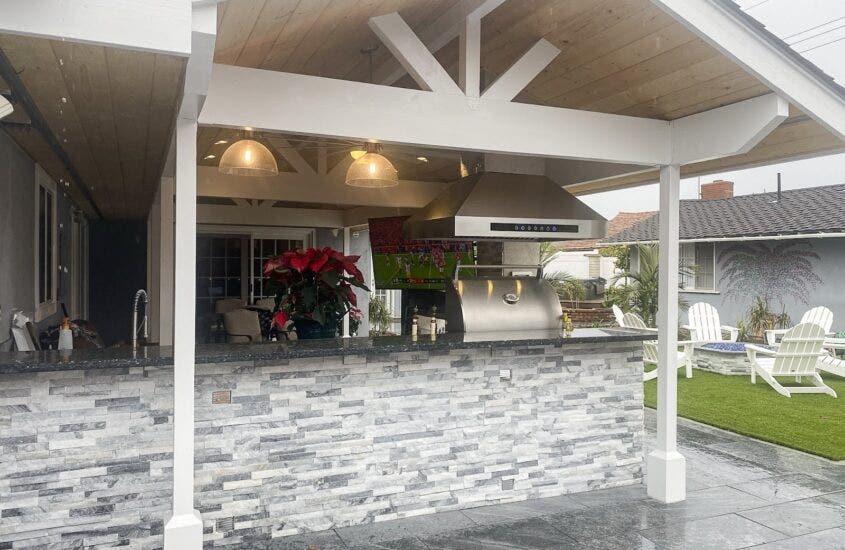
When it comes to outdoor kitchens, the question of whether a vent hood is necessary is a common one. As range hood experts, we confidently say that the answer is a resounding yes – an outdoor kitchen absolutely requires proper ventilation, typically in the form of an outdoor vent hood or range hood.
An outdoor kitchen range hood helps accomplish a few key functions:
Ventilation – It removes the hot air, smoke, and steam generated during cooking so the outdoor kitchen space remains comfortable and well-ventilated.
Odor control – The vent hood captures and removes cooking odors so they don’t linger around the outdoor living area.
Grease/residue removal – The vent hood filters out grease and other cooking byproducts to keep the outdoor kitchen clean.
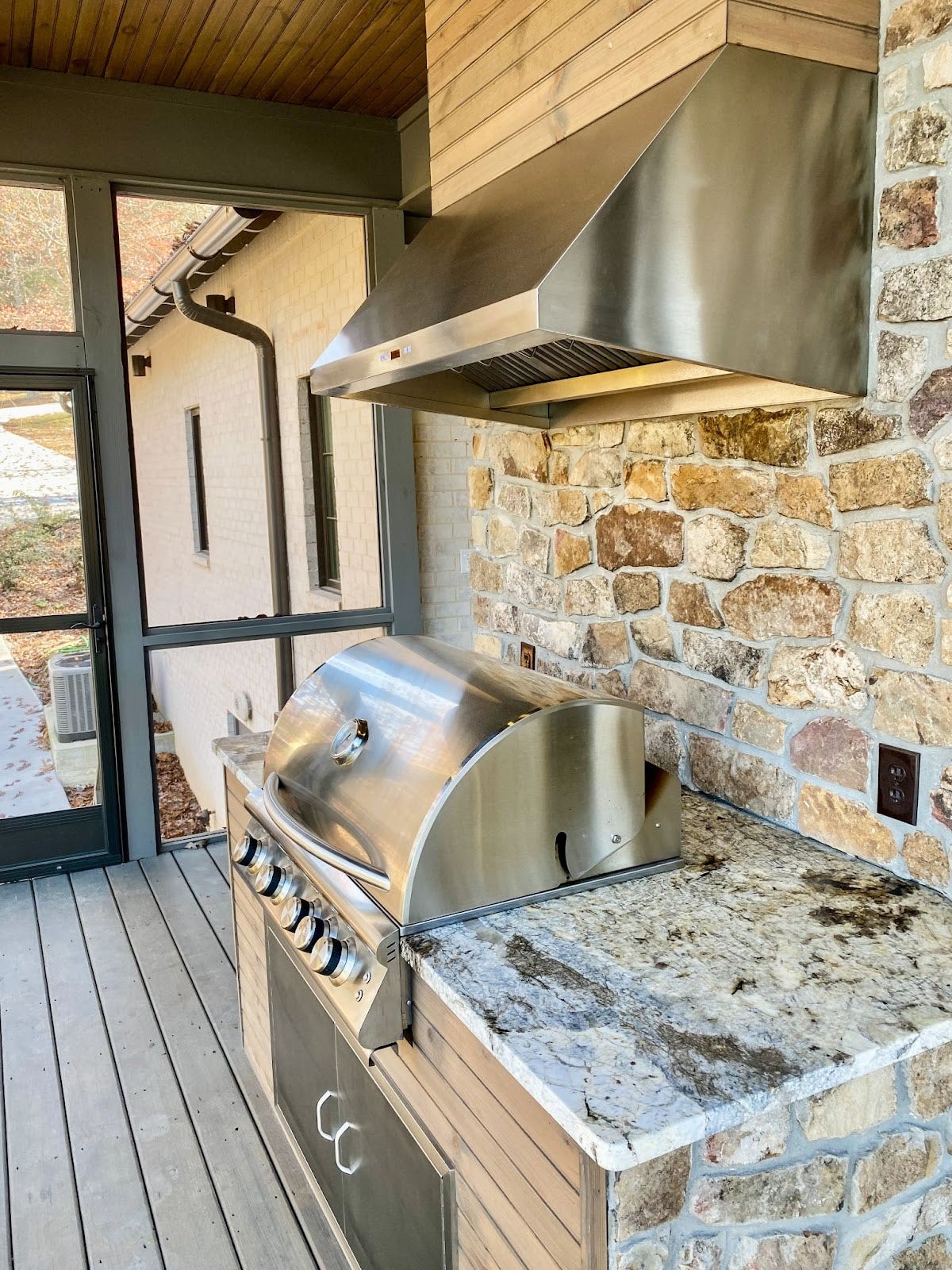
Table of Contents
Managing Heat, Smoke, and Odors in the Outdoor Kitchen
The primary reason an outdoor kitchen needs a vent is to effectively manage the heat, smoke, steam, and odors generated during outdoor cooking. When you’re grilling, searing, or using other high-heat outdoor cooking appliances like a pizza oven or smoker, those byproducts of cooking need to be properly vented and removed from the outdoor living space.
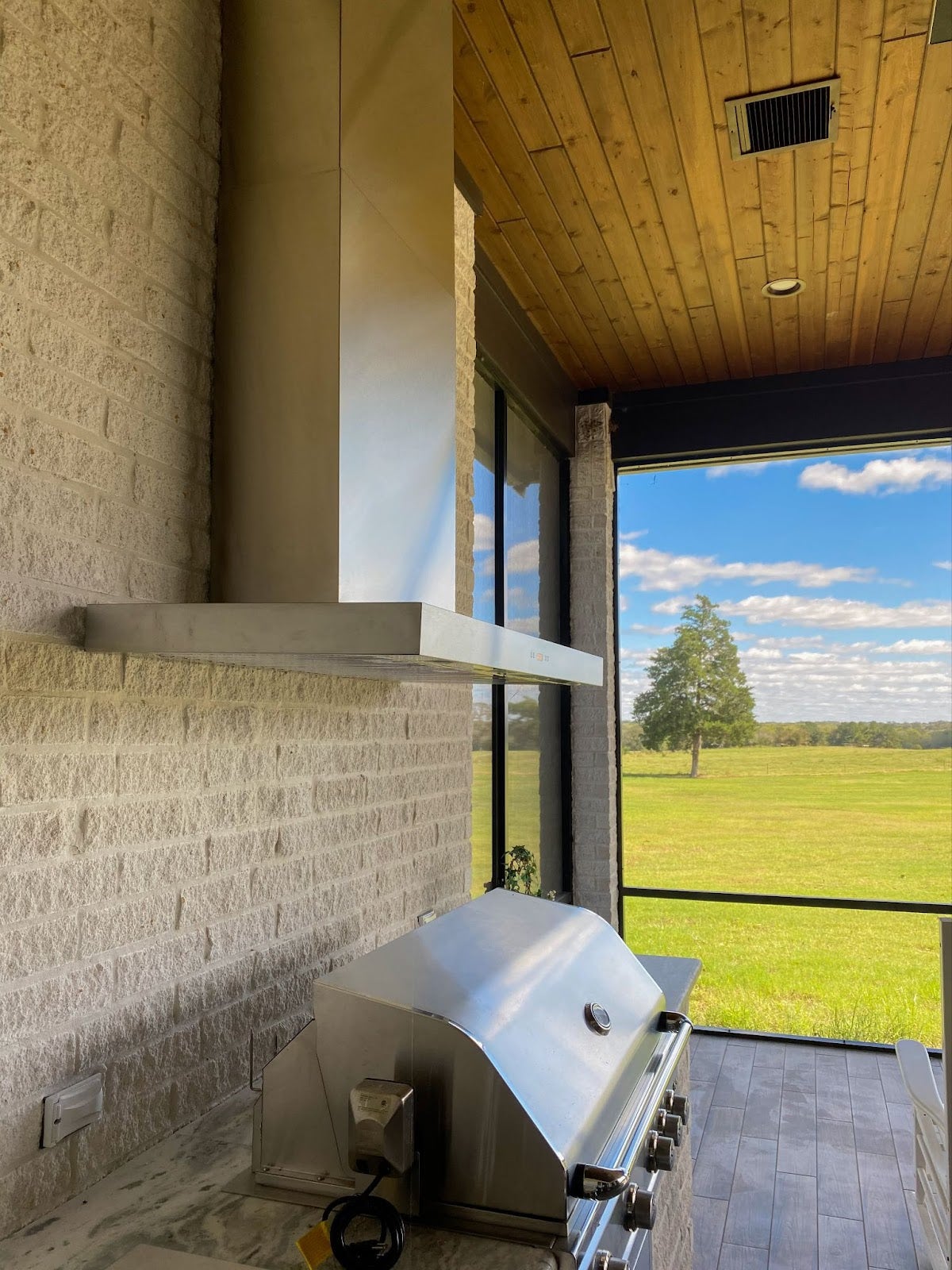
Without an outdoor vent hood or range hood in place, those heat, smoke, and odor emissions can quickly create an unpleasant and potentially unsafe environment in the outdoor kitchen area. Not to mention their effects on the kitchen itself.
A vent hood serves as an essential piece of equipment to maintain comfort, air quality, and cleanliness in the outdoor kitchen.
Choosing the Right Outdoor Vent Hood
Most vent hoods designed for outdoor kitchens are specifically engineered to withstand the elements. Quality outdoor vent hoods are made from durable, weather-resistant materials like stainless steel to hold up against sun, wind, rain, and other outdoor conditions. They also feature powerful fan blowers to effectively capture and vent large volumes of air.
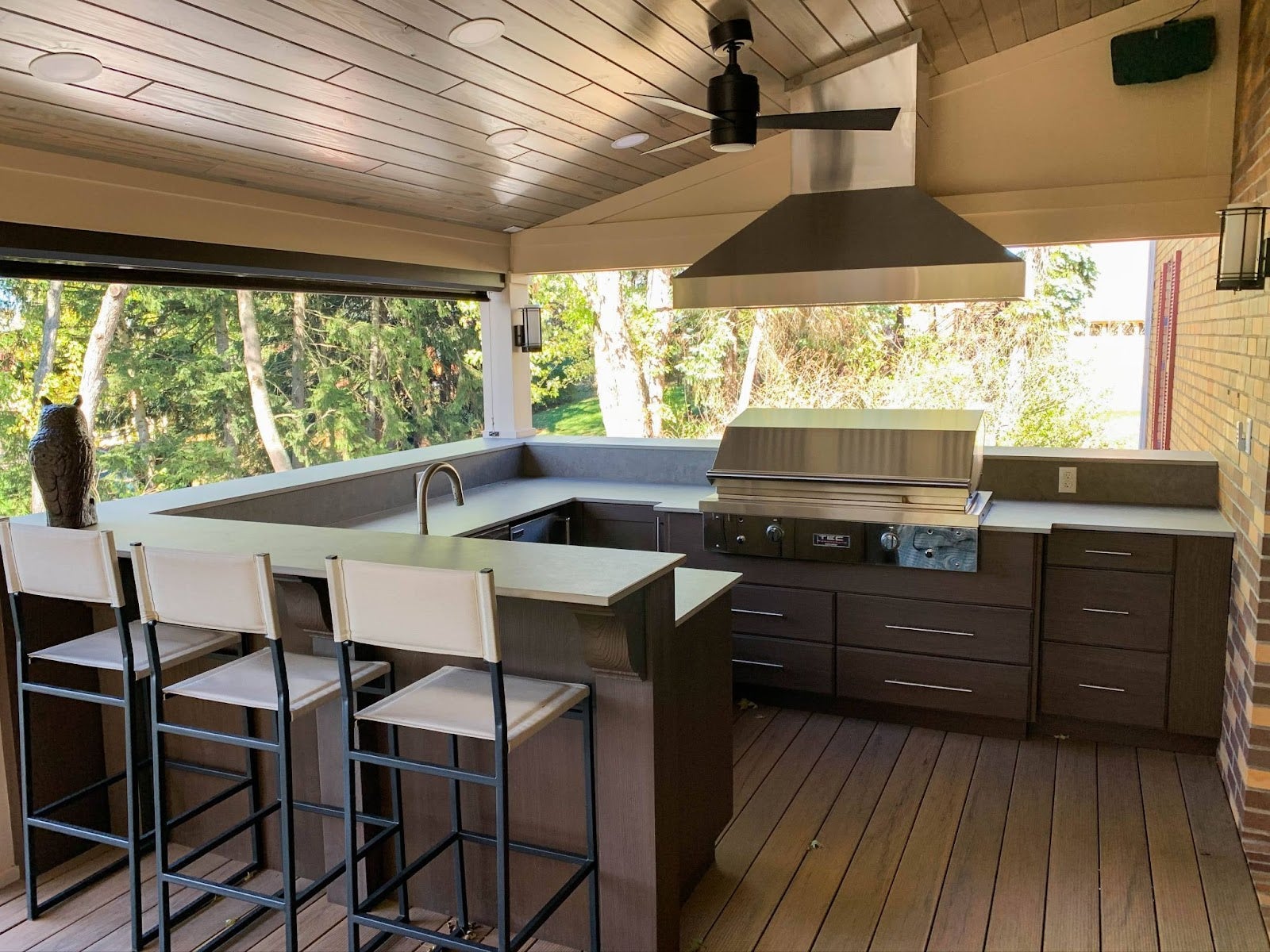
The size and CFM (cubic feet per minute) rating of the outdoor vent hood or range hood required will depend on the size of the outdoor kitchen, the number and type of outdoor cooking appliances in use, and local building codes.
As a general rule, outdoor kitchens with larger grills, cooktops, or other high-output cooking equipment will need a more powerful vent hood with a higher CFM rating to manage the increased airflow needs.
Check out our full guide on selecting the size and power you need here.
Proper Installation and Maintenance for Outdoor Vent Hoods
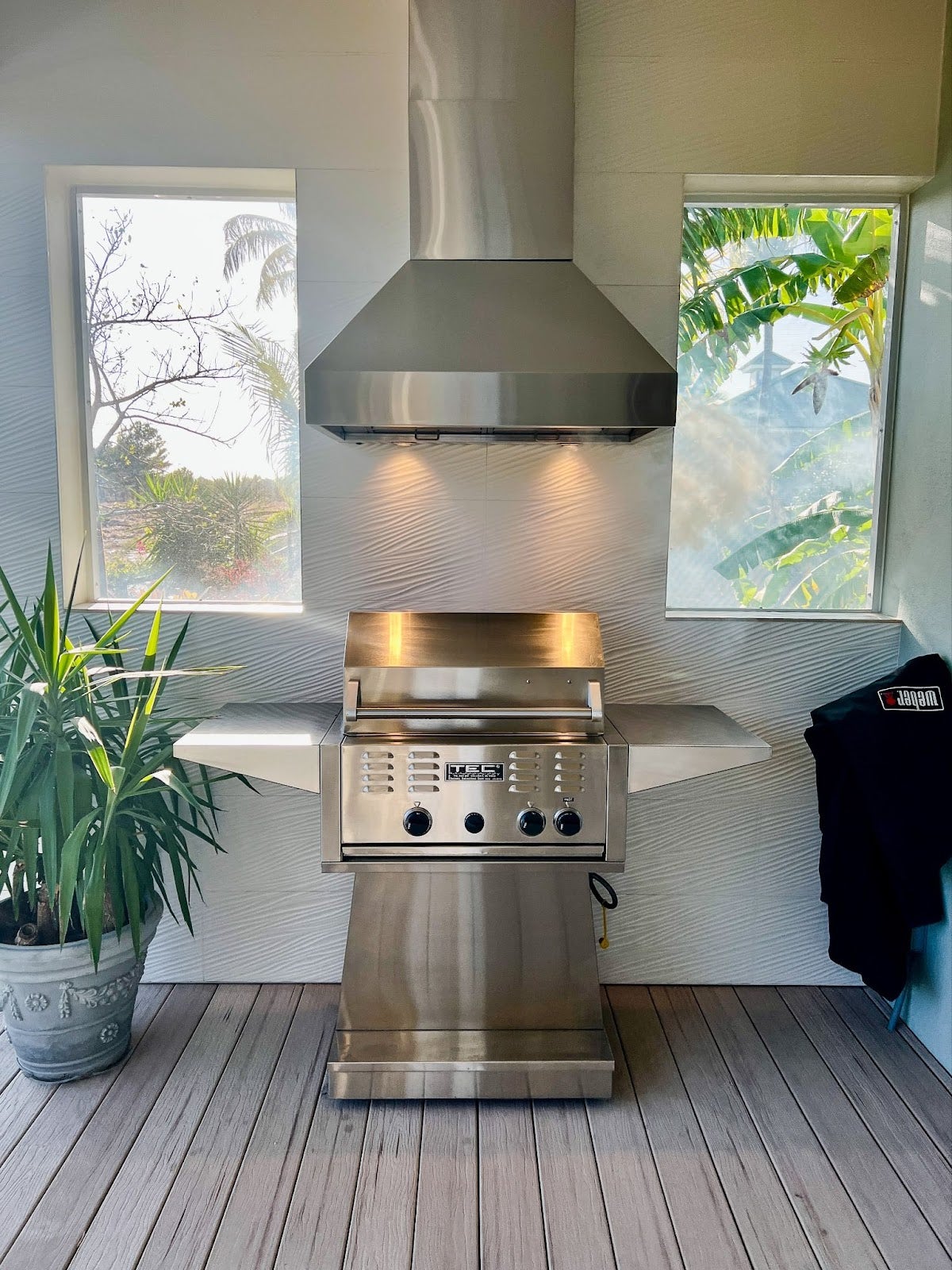
In addition to venting heat, smoke, and odors, an outdoor vent hood also plays a crucial role in controlling grease and preventing the buildup of cooking residue. The hood’s filters capture grease and other airborne particles, keeping the outdoor kitchen area cleaner and safer. Regularly cleaning the vent hood filters is an important part of proper outdoor kitchen maintenance.
An outdoor vent hood or range hood can be installed in a few different ways, depending on the design of the outdoor kitchen space. For a covered outdoor kitchen with a solid ceiling, the vent hood is typically mounted directly to the ceiling above the cooking appliances. This creates an efficient venting system that draws air directly upwards and out of the outdoor living area.
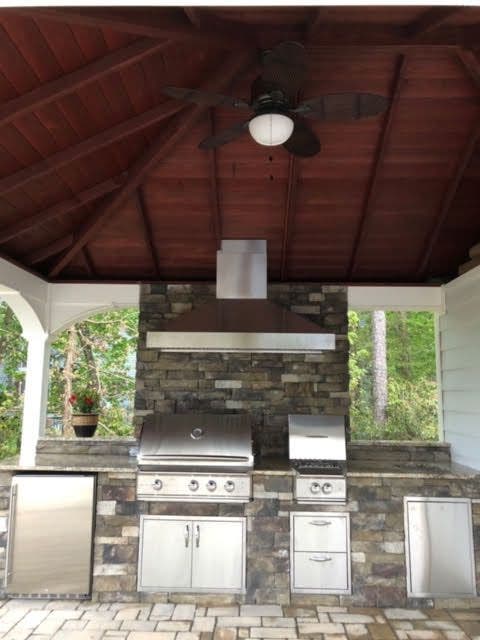
5 Outdoor Range Hood Installation Tips
For an open-air or partially covered outdoor kitchen, a wall-mounted or island-mounted vent hood can be a suitable alternate option. These hoods are not attached to a ceiling but are instead positioned strategically above the cooking zone to capture and vent the airflow.
No matter the specific installation method, the vent hood must be properly sized, positioned, and connected to an outdoor-rated ductwork system that vents to the exterior of the home or other structure. This ensures the heat, smoke, and odors have a clear path to escape the outdoor kitchen area.
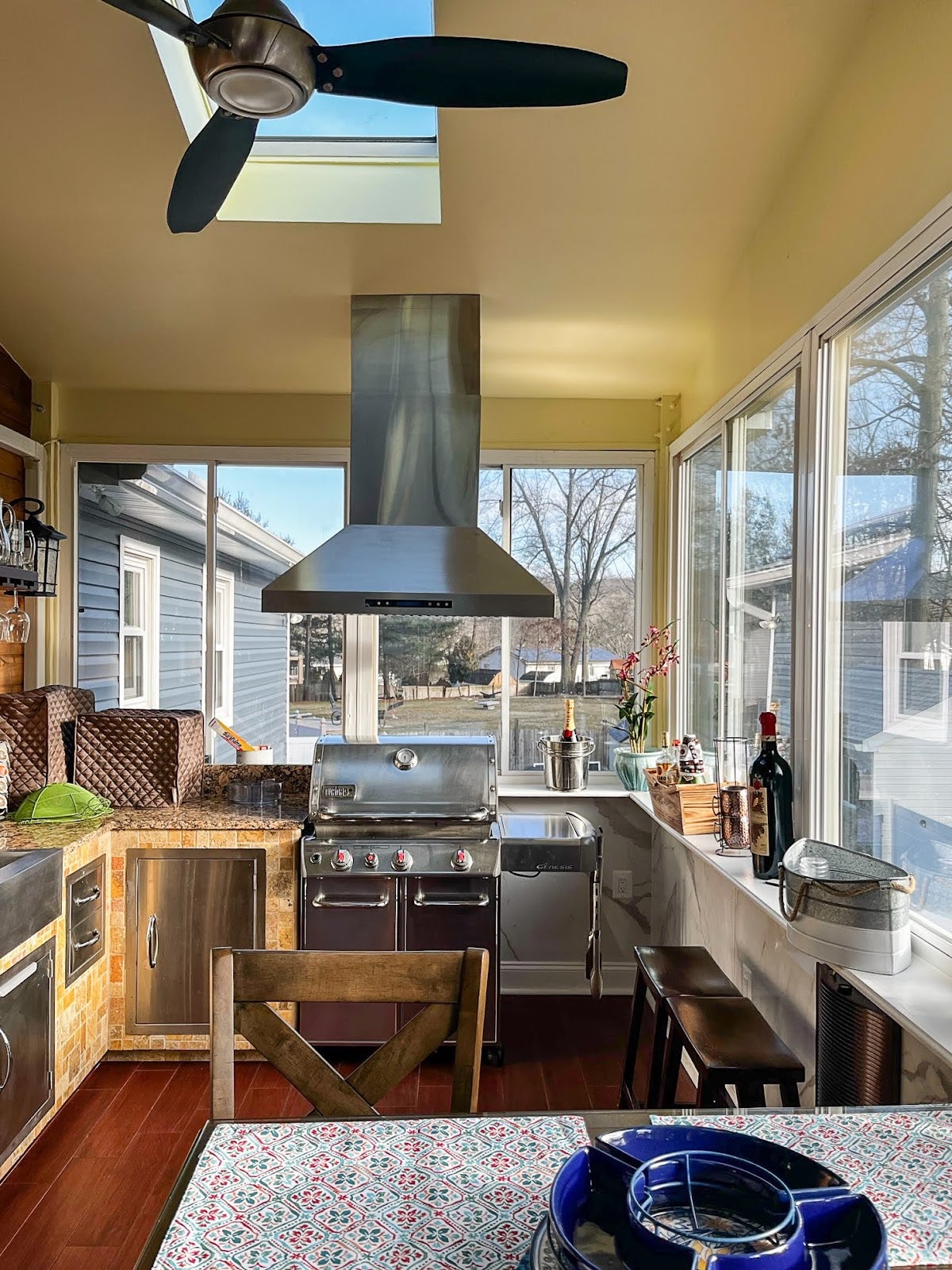
In addition to the primary vent hood, some outdoor kitchens may also incorporate supplementary ventilation features like island vents or downdraft systems. These additional ventilation components can further enhance the airflow and help prevent heat, smoke, and odors from lingering in the outdoor living space.
Here is our guide on installing your outdoor range hood.
When designing an outdoor kitchen, it’s crucial to carefully consider the ventilation needs from the start. Consulting with a licensed electrician and/or HVAC professional can help ensure the proper vent hood or range hood is selected and installed to meet both the functional and safety requirements of the outdoor cooking environment.
Aesthetic Considerations for Outdoor Vent Hoods
Beyond the essential ventilation benefits, an outdoor vent hood can also serve as an aesthetic centerpiece for the outdoor kitchen design. Many high-end outdoor vent hoods feature built-in lighting, custom finishes, and other decorative elements that integrate seamlessly with the overall style of the outdoor living space.
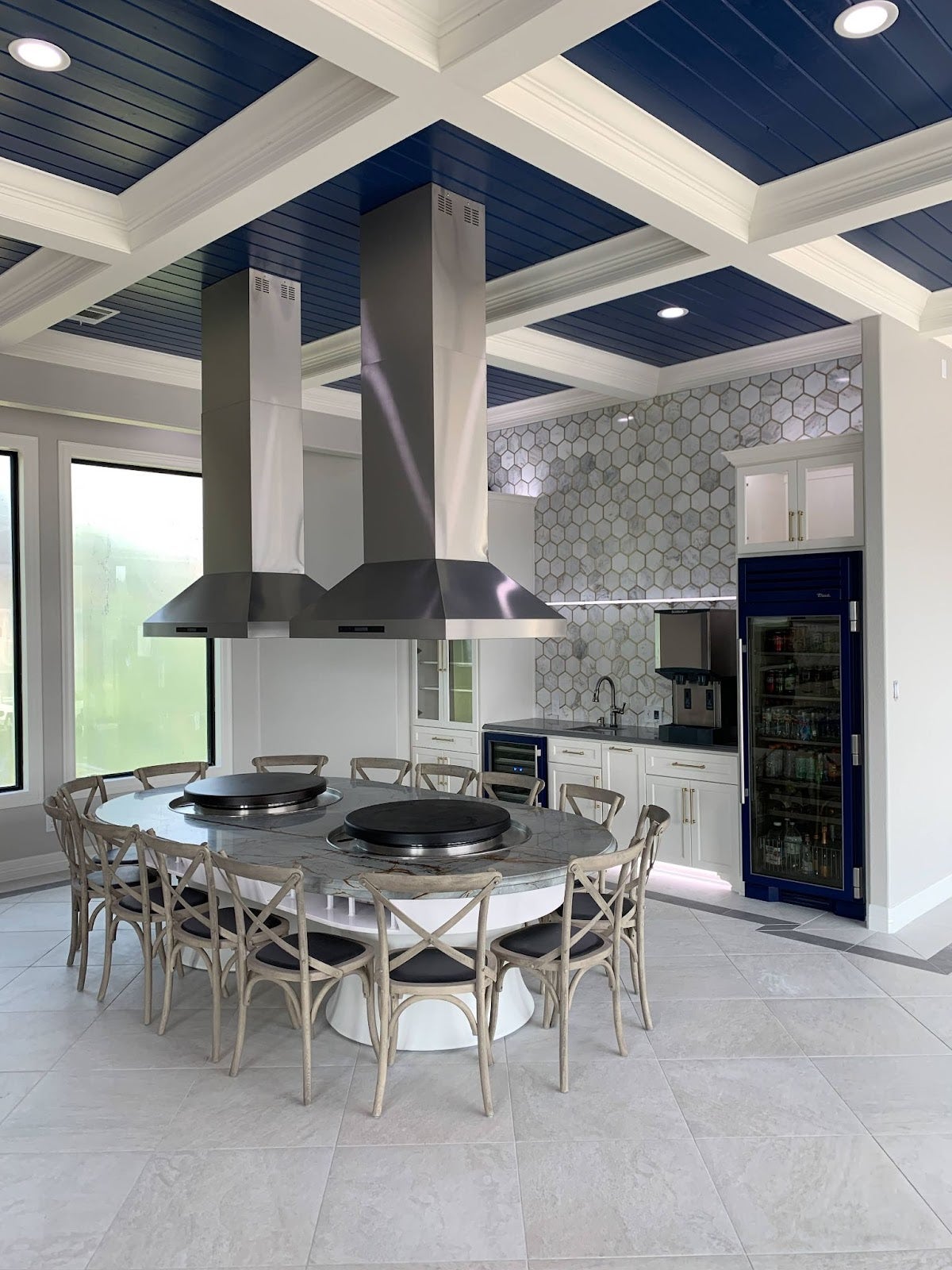
When selecting an outdoor vent hood, homeowners and designers should consider factors like the hood’s CFM rating, noise level, material finishes, and additional features like lighting or controls. Choosing a vent hood that not only functions well but also complements the outdoor kitchen’s visual appeal can elevate the entire outdoor living experience.
Maintaining Optimal Outdoor Vent Hood Performance
Proper maintenance is also crucial for ensuring an outdoor vent hood continues to perform optimally. The filters should be cleaned regularly using a non-abrasive cloth and soapy water to prevent grease buildup. The exterior surfaces should also be wiped down periodically to maintain the vent hood’s appearance and prevent any staining or corrosion.
Tips To Clean Your Outdoor Hood
Conclusion: The Indispensable Role of Outdoor Vent Hoods
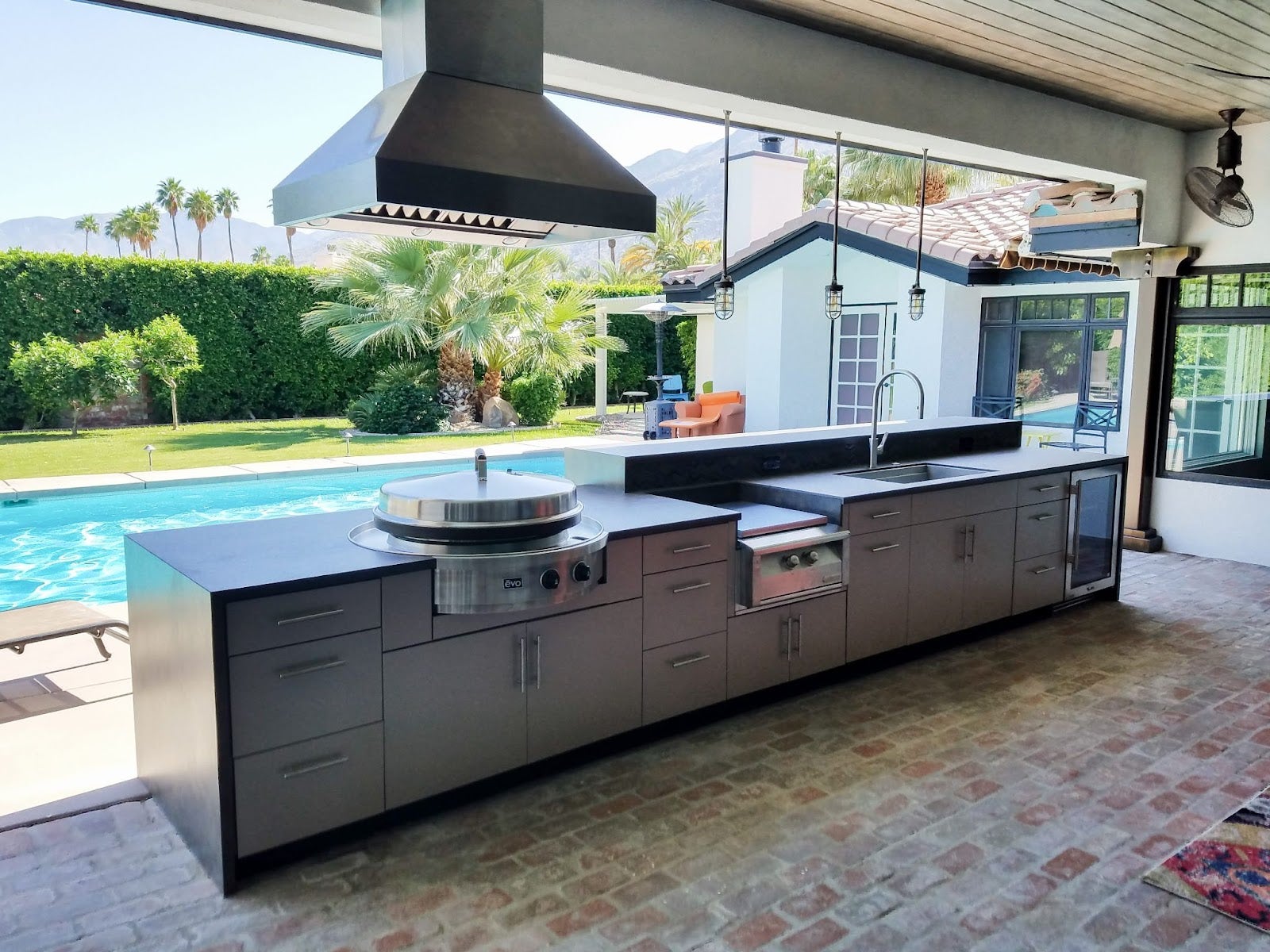
In conclusion, an outdoor kitchen truly does need a vent hood or range hood. This vital piece of equipment is essential for managing the heat, smoke, steam, and odors generated during outdoor cooking, while also helping to keep the outdoor living space clean, comfortable, and safe for family and guests. With the right outdoor vent hood in place, homeowners can enjoy the full benefits and functionality of their outdoor kitchen for years to come.
One important consideration when selecting an outdoor ventilation hood is how much air it can effectively move. The hood’s CFM (cubic feet per minute) rating indicates its air handling capacity, and this number should be matched to the size of your outdoor cooking setup. A hood with too low of a CFM may struggle to adequately vent heat, smoke and odors, while an oversized model could create unwanted noise and turbulence. Consulting with an HVAC professional can help ensure you choose the right ventilation hood for your outdoor kitchen’s specific needs.
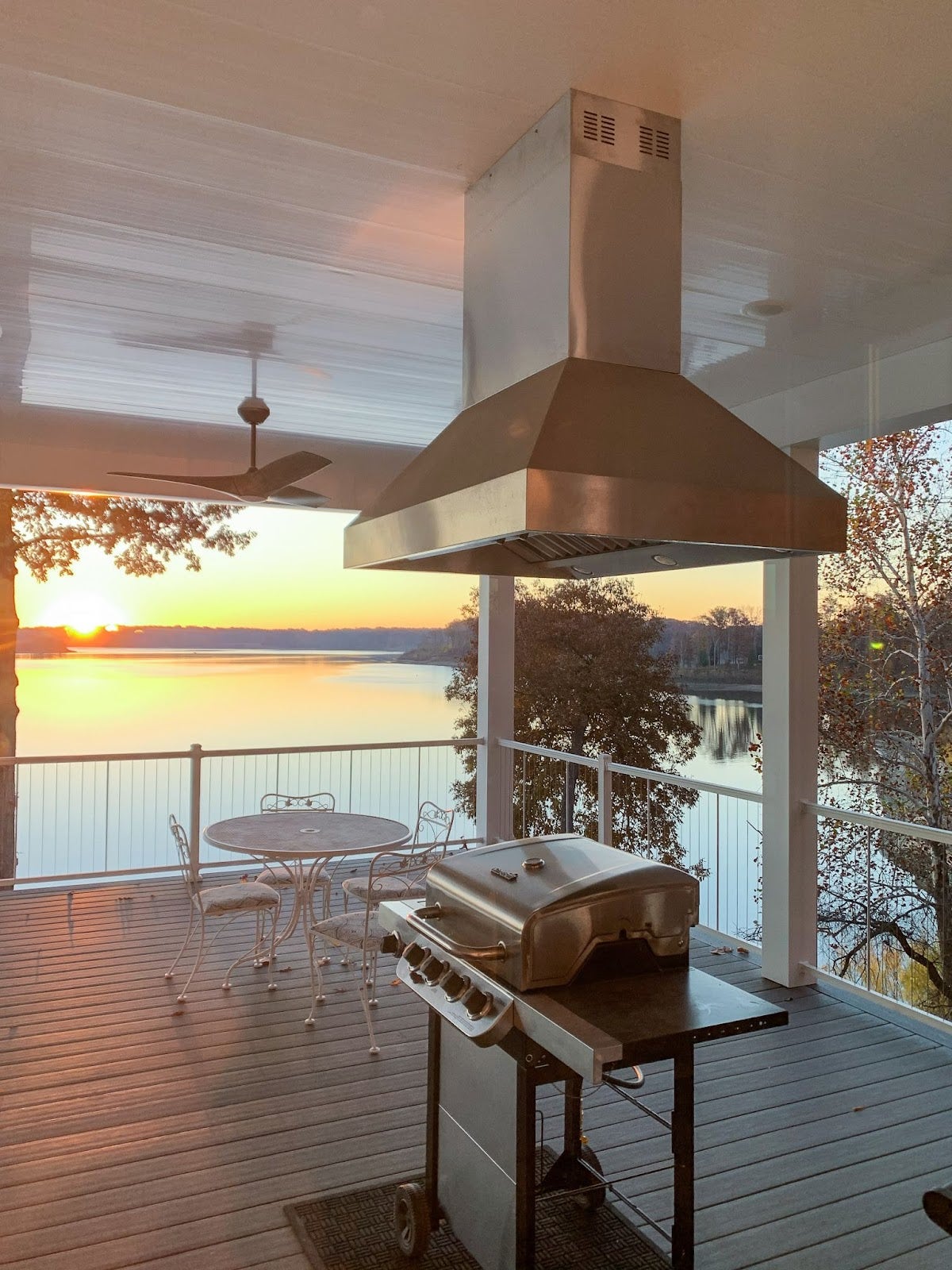
Another factor to weigh is the type of fuel powering your outdoor cooking appliances. If you have a natural gas grill or other gas-fueled equipment, proper venting is critical for safely dispersing any combustion byproducts. Liquid propane setups have their own venting requirements as well. Choosing a ventilation hood certified for outdoor use and installing it with the guidance of a licensed professional will help guarantee your outdoor kitchen operates safely, regardless of the fuel source.
Other Articles
Who to Hire for Flawless Outdoor Range Hood Installation
How to Clean Your Outdoor Hood (3 Simple Steps)
Cooking Fumes: A Hidden Health Risk?




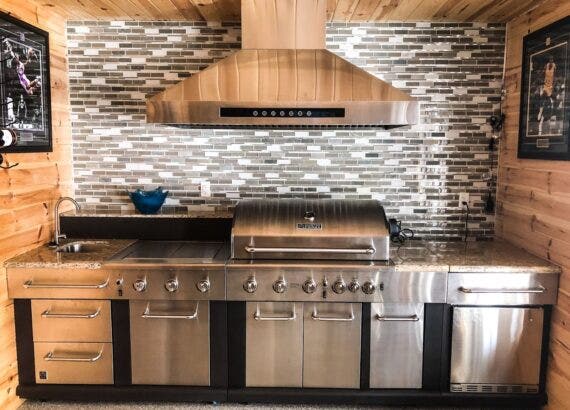
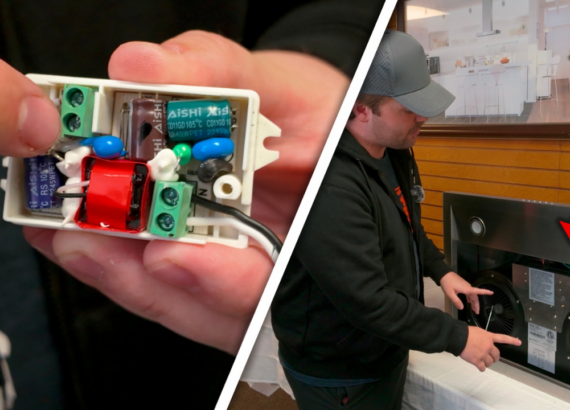
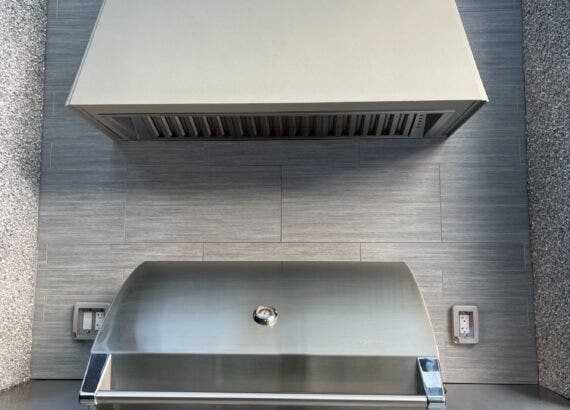
Comments are closed.